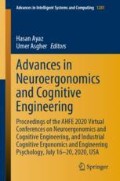Abstract
In some contexts, brain dysfunctions may be considered as a model of phantom functional states that can form in a healthy person under extreme conditions. To assess individual psychological characteristics and the degree of phantom severity a clinical interview, a study of auditory speech memory, an assessment of situational and personal anxiety, and differential diagnosis of depressive conditions were used. To study the auditory-cognitive functions, an original technique was developed “Recognition of auditory images”. EEG in the pre-stimulus period, as well as simultaneously with the perception of auditory images was recorded. In a phantom state, the latent period of perception of auditory images was significantly higher than the reference in 2.6–2.9 times, and the substantive effectiveness of auditory perceptual activity was 2.5 times lower. The coherent analysis of the EEG revealed a violation of the formation of “interaction foci”, where the reduction of intercentral interaction reached 18.8– 42.7%.
Access this chapter
Tax calculation will be finalised at checkout
Purchases are for personal use only
References
Masakowski, Y.R., Aguiar, S.K.: Human performance in virtual environments. In: Cai, Y. (ed.) Computing with Instinct. Lecture Notes in Computer Science, vol. 5897, pp. 107–118 (2011) https://doi.org/10.1007/978-3-642-19757-4_7
Verkholyak, O.V., Kaya, H., Karpov, A.A.: Modeling short-term and long term dependencies of the speech signal for paralinguistic emotion classification. SPIIRAS Proc. 18, 30–56 (2019) https://doi.org/10.15622/sp.18.1.30-56
Shostak, V.I., Lytaev, S.A., Golubeva, L.V.: Topography of afferent and efferent flows in the mechanisms of auditory selective attention. Neurosci. Behav. Physiol. 25(5), 378–385 (1995). https://doi.org/10.1007/BF02359594
Ren, P., Ma, X., Lai, W., et al.: Comparison of the use of blink rate and blink rate variability for mental state recognition. IEEE Trans. Neural Syst. Rehabil. Eng. 27, 867–875 (2019). https://doi.org/10.1109/TNSRE.2019.2906371
Lytaev, S.A., Shostak, V.I.: The thalamic integration of afferent flows in man during image recognition. Zhurnal Vysshei Nervnoi Deyatelnosti Imeni I.P. Pavlova 42(1), 12–20 (1992)
Lytaev, S., Shevchenko, S.: VEPs and AEPs: mapping of occlusive lesions in cerebral vessels. Ann. New York Acad. Sci. 821, 524–528 (1997). https://doi.org/10.1111/j.1749-6632.1997.tb48321.x
Ichiki, H., Kuroiwa, T., Taniguchi, I., Okeda, R.: Delayed recovery of auditory cortical evoked potentials is correlated with cortical neuronal death after transient cerebral ischemia in awake gerbils. Brain Res. 806(2), 278–281 (1998) https://doi.org/10.1016/S0006-8993(98)00757-4
Lytaev, S., Aleksandrov, M., Ulitin, A.: Psychophysiological and intraoperative AEPs and SEPs monitoring for perception, attention and cognition. Commun. Comput. Inf. Sci. 713, 229–236 (2017) https://doi.org/10.1007/978-3-319-58750-9_33
Corr, P.J., McNaughton, N.: Neuroscience and approach/avoidance personality traits: a two stage (valuation–motivation) approach. Neurosci. Biobehav. Rev. 36, 2339–2354 (2012). https://doi.org/10.1016/j.neubiorev.2012.09.013
Lytaev, S., Aleksandrov, M., Lytaev, M.: Estimation of emotional processes in regulation of the structural afferentation of varying contrast by means of visual evoked potentials. Adv. Intell. Syst. Comput. 953, 288–298 (2020). https://doi.org/10.1007/978-3-030-20473-0_28
Lytaev, S., Aleksandrov, M., Popovich, T., Lytaev, M.: Auditory evoked potentials and PET-scan: early and late mechanisms of selective attention. Adv. Intell. Syst. Comput. 775, 169–178 (2019). https://doi.org/10.1007/978-3-319-94866-9_17
Lytaev, S.A., Belskaya, K.A.: Integration and disintegration of auditory images perception. In: Lecture Notes in Computer Science, vol. 9183, pp. 470–480 (2015). https://doi.org/10.1007/978-3-319-20816-9_45
Hubbard, T.L.: Auditory imagery: empirical findings. Psychol. Bul. 136, 302–329 (2010). https://doi.org/10.1037/a0018436
Leaver, A.M., Van Lare, J., Zielinski, B., Halpern, A.R., Rauschecker, J.P.: Brain activation during anticipation of sound sequences. J. Neurosci. 29, 2477–2485 (2009). https://doi.org/10.1523/JNEUROSCI.4921-08.2009
Herholz, S.C., Halpern, A.R., Zatorre, R.J.: Neuronal correlates of perception, imagery, and memory for familiar tunes. J. Cogn. Neurosci. 24, 1382–1397 (2012). https://doi.org/10.1162/jocn_a_00216
Shergill, S.S., Bullmore, E., Simmons, A., Murray, R., McGuire, P.: Functional anatomy of auditory verbal imagery in schizophrenic patients with auditory hallucinations. Am. J. Psychiatry 157, 1691–1693 (2000). https://doi.org/10.1176/appi.ajp.157.10.1691
Seal, M., Aleman, A., McGuire, P.: Compelling imagery, unanticipated speech and deceptive memory: neurocognitive models of auditory verbal hallucinations in schizophrenia. Cogn. Neuropsychiatry 9, 43–72 (2004). https://doi.org/10.1080/13546800344000156
Author information
Authors and Affiliations
Corresponding author
Editor information
Editors and Affiliations
Rights and permissions
Copyright information
© 2021 The Editor(s) (if applicable) and The Author(s), under exclusive license to Springer Nature Switzerland AG
About this paper
Cite this paper
Belskaya, K., Lytaev, S. (2021). Algorithm for Assessing Auditory Images Perception and Verbal Information. In: Ayaz, H., Asgher, U. (eds) Advances in Neuroergonomics and Cognitive Engineering. AHFE 2020. Advances in Intelligent Systems and Computing, vol 1201. Springer, Cham. https://doi.org/10.1007/978-3-030-51041-1_5
Download citation
DOI: https://doi.org/10.1007/978-3-030-51041-1_5
Published:
Publisher Name: Springer, Cham
Print ISBN: 978-3-030-51040-4
Online ISBN: 978-3-030-51041-1
eBook Packages: Intelligent Technologies and RoboticsIntelligent Technologies and Robotics (R0)

